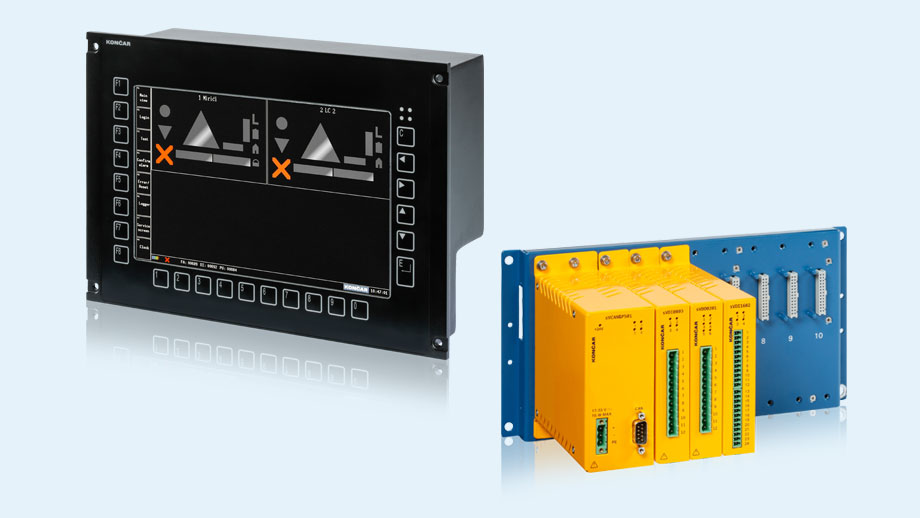Safety human-to-machine interface - SafeHMI
SafeHMI is a modular hardware and software platform developed for safety-critical applications, originally designed for remote monitoring and control of multiple level crossings. It comprises a Human-Machine Interface (HMI) and distributed input/output units (Safe I/O).

The Safe I/O distributed units consist of a motherboard, a CAN communication module with power supply, digital input modules (8 and 16 channels), and digital output modules (2 channels).
The SafeHMI platform has been assessed by TÜV SÜD according to CENELEC standards EN50126-1, EN50128, and EN50129, achieving the highest safety integrity level, SIL 4.
During the development of the SafeHMI platform, an innovative approach was implemented to achieve the highest level of safety. This method integrates both single-channel and dual-channel architectures, along with interactive error detection between the HMI and the operator. While the operator can use an integrated keyboard, additional safety buttons are required to confirm safety-critical commands.
Safe I/O components are designed with two identical, independent channels. The system allows for up to four Safe I/O units to be connected to a single SafeHMI display.
The core functionality of SafeHMI components is the implementation of safety systems that protect human lives in hazardous scenarios, such as remote monitoring and control of level crossings.